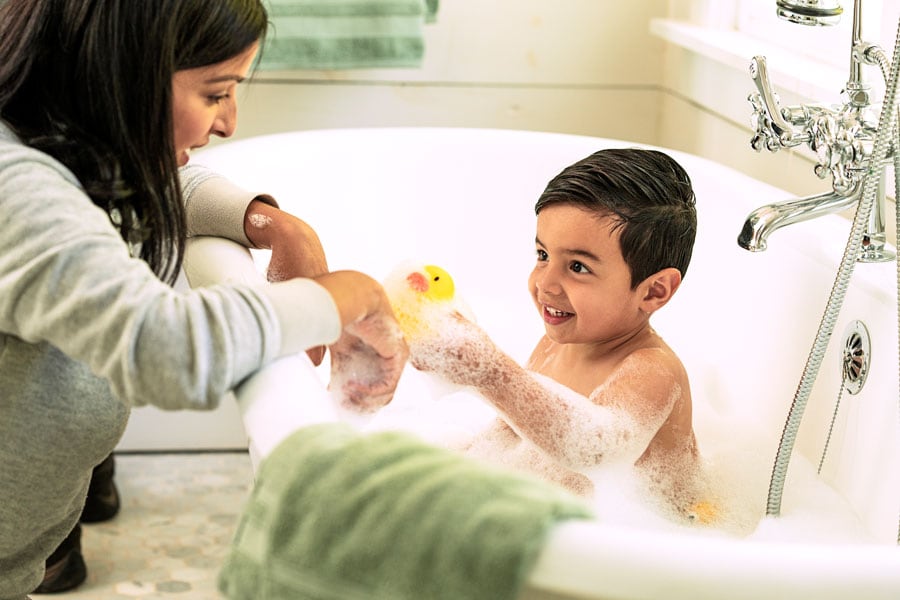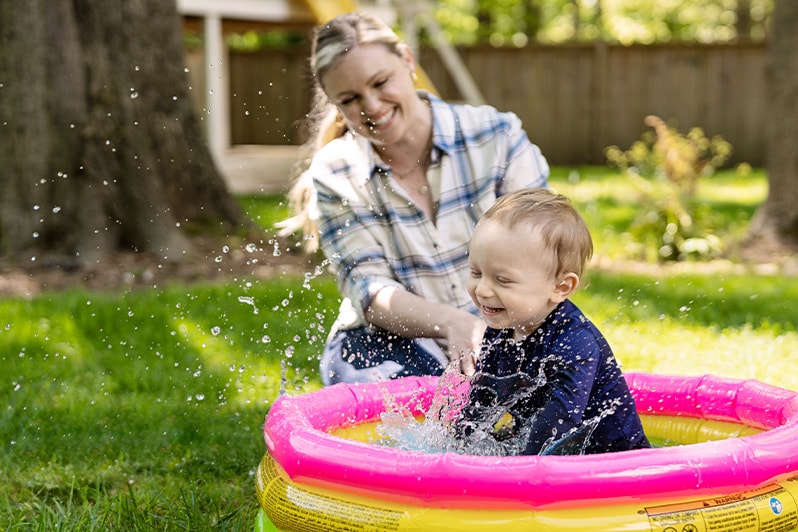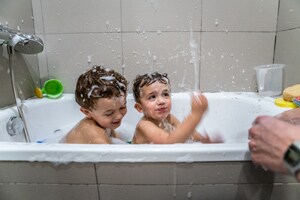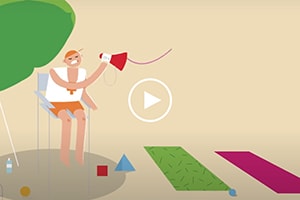Toddler Bath Safety and Tips for Bathing Toddlers
Bath time can be a special bonding experience for many caregivers and their toddlers. Others may find their toddler suddenly hates baths, which means bath time can be stressful. Whether you’re having fun in the tub or navigating power struggles, bath safety is always important.
Unfortunately, drowning is a leading cause of death in children ages 1 to 4, and it’s often quick and silent. A toddler can drown in just 30 seconds in as little as 1 inch of water.
Below, Children’s Healthcare of Atlanta Strong4Life experts answer your most common bath safety questions and share tips to make bath time less stressful for both you and your little one.
In this article:

Bath safety tips for toddlers
Even if your toddler is a bath time pro, it’s important to keep bath safety in mind. The most important bath safety tip is to practice close supervision.
More toddler bath safety tips:
- Gather any towels, shampoo and other supplies before you start your toddler’s bath. This way, there’s no reason to leave your child’s side while they’re in the bath.
- Once the water is running, don’t leave your child’s side. Always keep your toddler within arm’s reach to prevent drowning in the bath.
- Run a shallow bath. We recommend using no more than about 2 inches of water. Even though it doesn’t seem like a lot of water, children can drown in just 30 seconds, in as little as 1 inch of water.
- Test the bath temperature. Use your wrist or elbow to make sure bathwater is warm, not hot. To be extra careful, set your water heater thermostat to 120°F.
- Install no-slip strips or use non-slip bath mats for the bottom of the tub to prevent falls.
- Remove toys after the bath so your child isn’t tempted to get back in the tub. Set them out to dry to avoid the buildup of mold and mildew.
- Drain water immediately after each bath.
Bath safety can be simple. The bottom line: The most effective bath safety tool on the market is you! You’re always your baby’s best lifeguard.
How-tos of toddler bath time
Good news! Bathing a toddler is not much different from bathing a baby, so the process will feel familiar. Our experts share tips on what cleansers to use and how often to bathe a toddler.
Here are some things to keep in mind as your little one graduates to the tub:
- Work from the top down. Start by washing your child’s hair, then their face, neck and body. This prevents dirt from washing down onto areas you’ve already cleaned. If your child is nervous or doesn’t love the feeling of water pouring over their head, allow them to play in the bath before you start washing. This gives them time to adjust and become more relaxed in the tub.
- Use a gentle cleanser. You’ll want to avoid using soap on your little one’s sensitive skin because it can cause dryness. Instead, look for kid-friendly, mild cleansers that are free of perfumes or harsh chemicals. These will often be tear-free, as well, to avoid irritating your toddler’s eyes.
- Know when to use bubble bath. While bubbles are certainly fun, we recommend waiting until your child is around 3 years old for bubble baths. Before then, bubble baths can irritate little ones’ sensitive skin.
- Dry them off to avoid dry skin. When bath time is over, dry your toddler off quickly to avoid skin irritation. Pat dry with an absorbent towel instead of rubbing. If your little one is prone to dry skin, limit bath time to a maximum of 10 minutes, using water that is closer to lukewarm, especially in winter, when the air has a more drying effect.
- Create a bath routine. Adding baths to your regular routine lets your toddler know when to expect them. We recommend bathing your toddler 2 to 3 times per week since more frequent baths could irritate their skin. Of course, if your toddler gets messy playing with paints or stomping in mud, you can add an extra bath here and there as needed. A soothing bath before bedtime can help your little one wind down for sleep, but if your toddler is anxious after a bath, morning may be a better option. Be sure to inform your toddler at least 5 to 10 minutes before bath time for a smoother transition.
- Consider bathing siblings together. Bath time can be a great time for siblings to have fun together and bond. Wait until your little one can sit up without support to bathe them with older siblings. Just remember, an older sibling should never be left alone in the bath with a younger sibling. Always practice close adult supervision around water.
Following these steps will keep your toddler clean, but how do you keep them entertained in the tub? Read on to learn how to make toddler bath time fun.
How to make toddler bath time fun
The purpose of a bath is to get your little one clean, but it’s also an opportunity to have fun! Creating an enjoyable bath experience can reduce bath time stress. Plus, making up games and being silly together is a great bonding experience.
Here are our top tips on how to make toddler bath time fun:
- Try different toys. When it comes to bath toys, there are tons of options out there. Ones that allow your toddler to play with the water can be especially fun. These include simple squirt toys or cups with holes that allow water to sprinkle out. Consider household items that can be used safely in the tub, like a plastic ladle for scooping and pouring water, or everyday toys that are waterproof, like a favorite doll or race car.
- Get creative. When it comes to bath time fun, we often think of what’s in the tub—water to splash in, bubbles to play with, floaty toys. But what about what’s around the tub? Tub walls are a blank canvas that can spark your toddler’s creativity. Soap crayons allow your child to draw on the tiles, and foam blocks and reusable stickers cling to the walls without causing damage. These entertaining toys allow your child to use their brain while they clean their body.
- Use your imagination. Storytelling is a great way to keep your child engaged during a bath. Whether you’re an explorer looking for sea creatures, a mermaid swimming with dolphins or a duck splashing in a puddle, there are lots of ways to use your imagination in the tub. If you’re struggling to come up with stories, try bath books! They’re made of water-safe materials and can inspire your little one’s next bath time adventure.
- Make music. Ever wonder why so many online videos show people belting out their favorite tunes—in the bathroom? That’s because the acoustics are great! Turn on some music and sing your toddler’s favorite songs or make silly noises and listen as they echo off the tile.
- Get bubbly. Bubbles are a classic for a reason. Watching them fill up the tub. Smooshing them between your fingers. Wearing them as a hat or beard. There are tons of fun ways to play with bubbles! Look for tear-free and fragrance-free options that won’t irritate your little one’s eyes or skin. We also recommend waiting until your child is 3 years old to introduce bubbles because they can dry out an infant’s sensitive skin, and avoiding them if your child has dry skin or eczema.
With so many ways to play in the tub, you can explore what works best for you and your toddler. Participating with your child, or even hopping in the tub with them, can help make bath time extra special. But remember, you’re not just their playmate, you’re also their lifeguard. Water safety is always the first priority.
If your child has an injury or is showing signs of illness, call your doctor or visit an urgent care center. If your child has a life-threatening injury or illness, is having trouble breathing or is unconscious, call 911 and/or visit an emergency department immediately.


